44 Pilosocereus Cacti Types: Identification and Care Instructions
Ready to learn about the amazing Pilosocereus species of cactus? These cool plants are known as “blue cacti” or “tree cacti” because of their bluish-green color and tree-like shape. With over 40 different species, Pilosocereus cacti come in all sorts of funky forms, from tall and thin to short and stumpy.
Whether you’re a cactus lover or just curious about these prickly plants, this guide has everything you need to know. We’ll show you how to identify different Pilosocereus varieties with tons of pictures. Plus, you’ll get easy tips for keeping your Pilosocereus cactus healthy and happy at home.
Caring for a Pilosocereus is super simple, even if you’re new to growing cacti. These low-maintenance plants are perfect for anyone looking to add some desert vibes to their indoor or outdoor space. Get ready to fall in love with the unique beauty of the Pilosocereus cactus!
Contents
Types of Pilosocereus Cacti
There are over 40 different pilosocereus species, ranging from tall and thin varieties to short and stumpy forms.
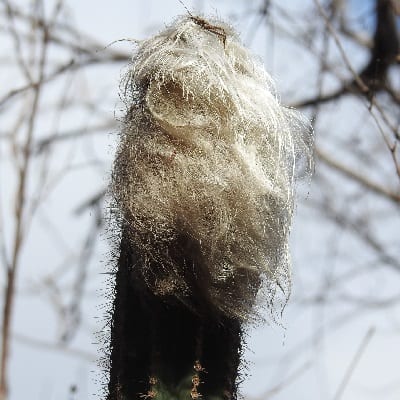
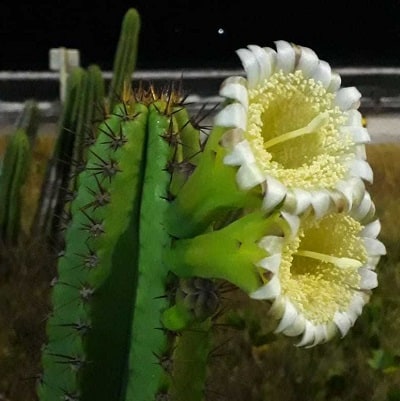
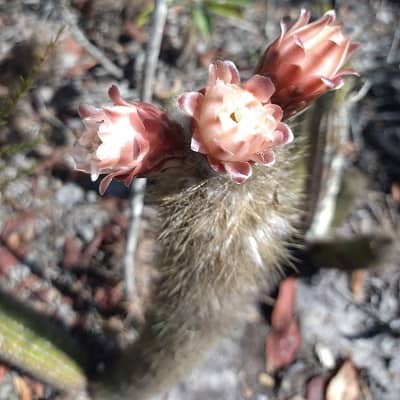
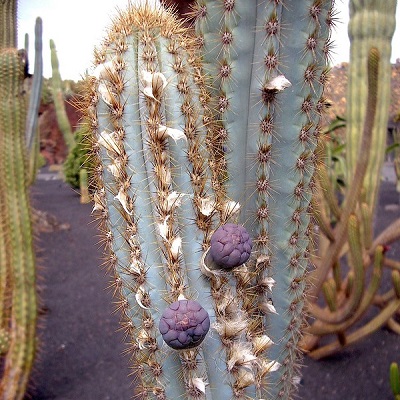

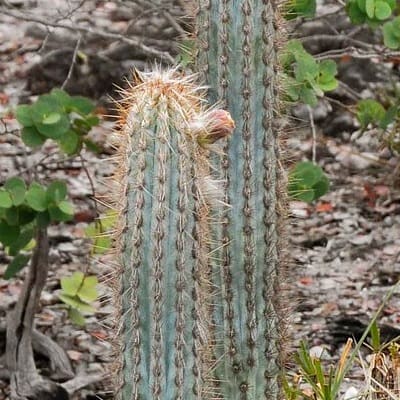
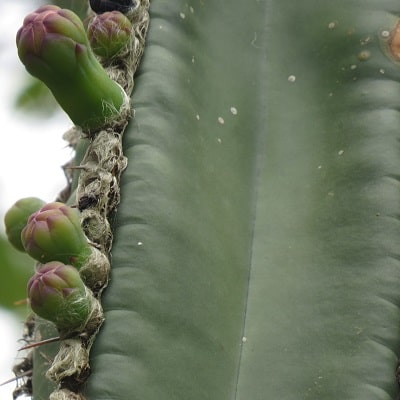

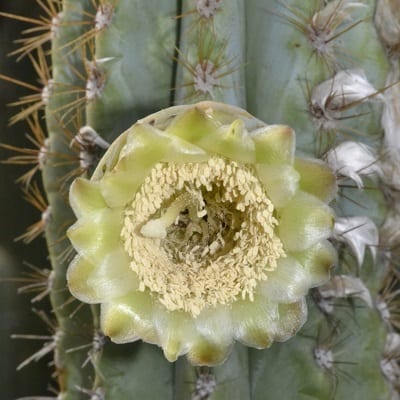
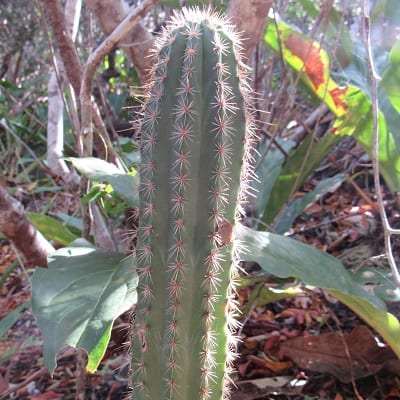
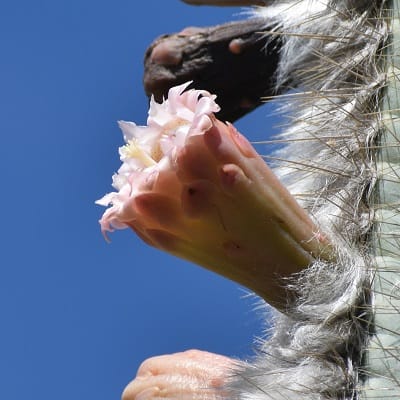
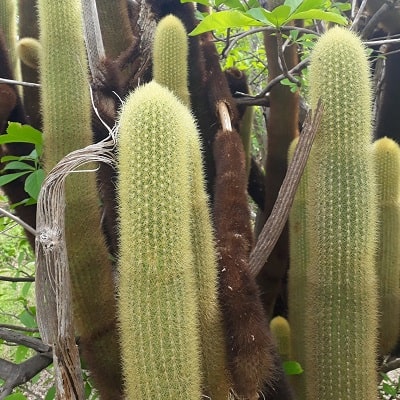
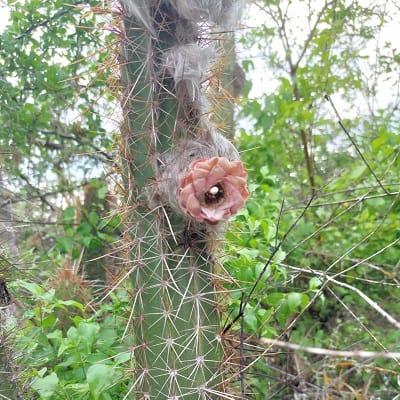
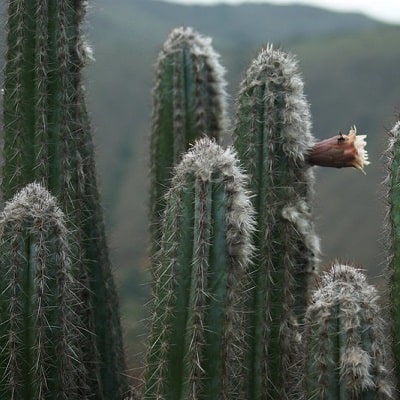
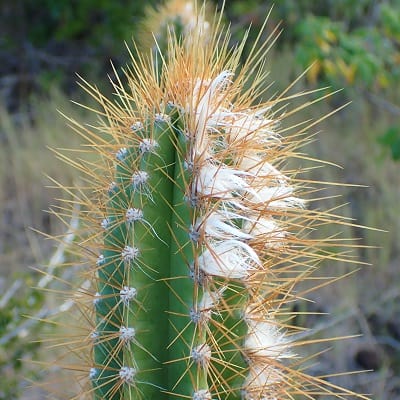

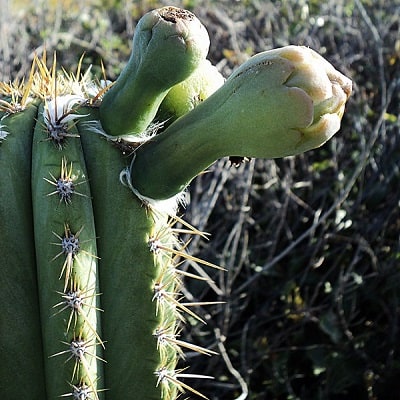
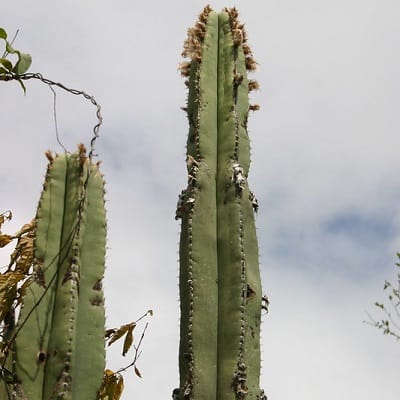
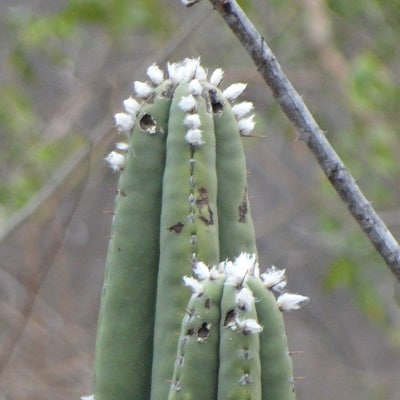
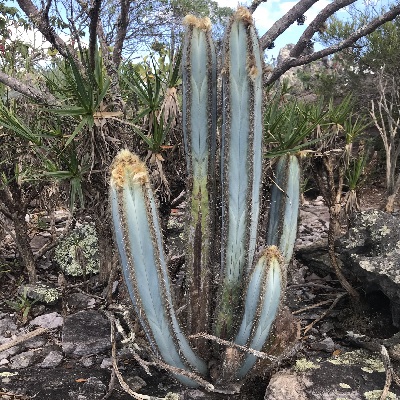
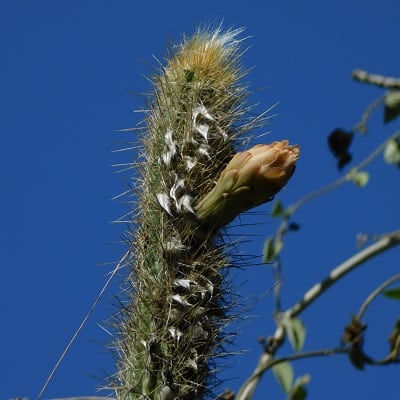
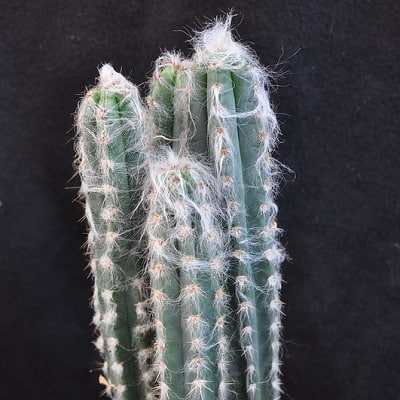
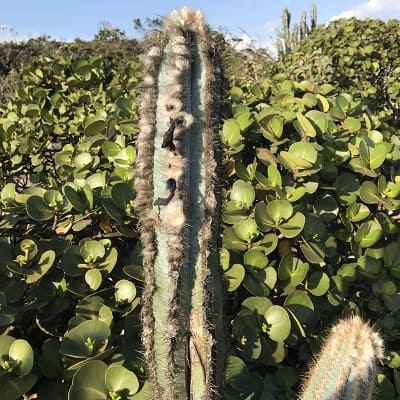
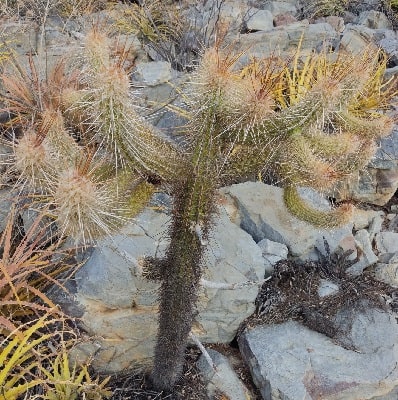


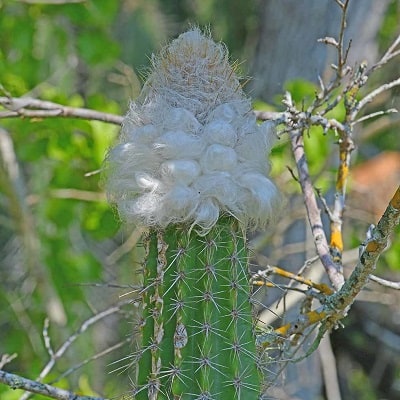
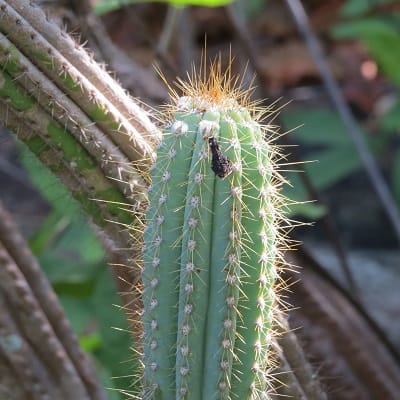
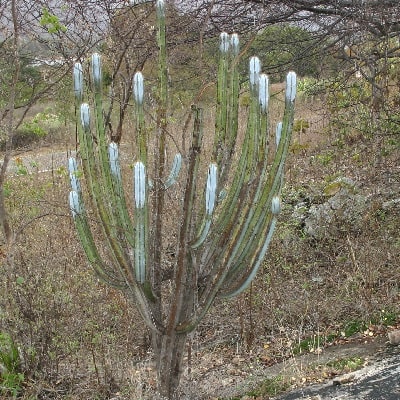
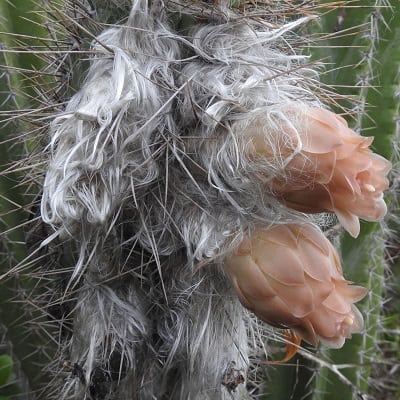
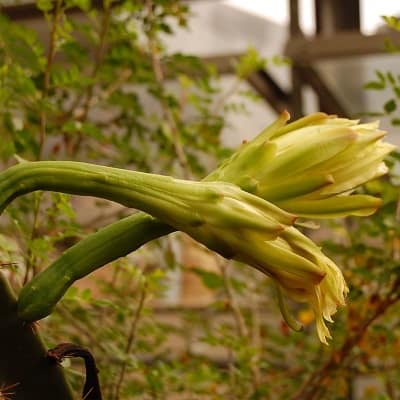
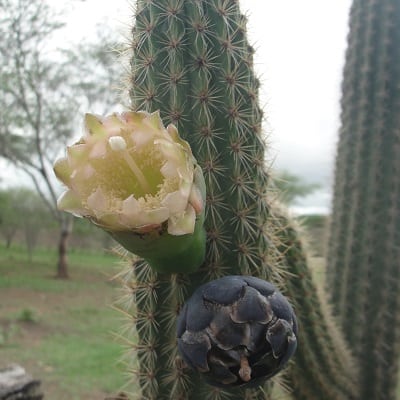
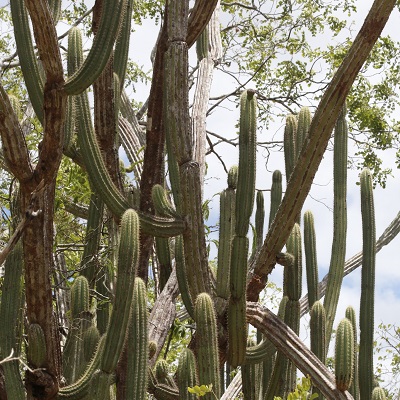
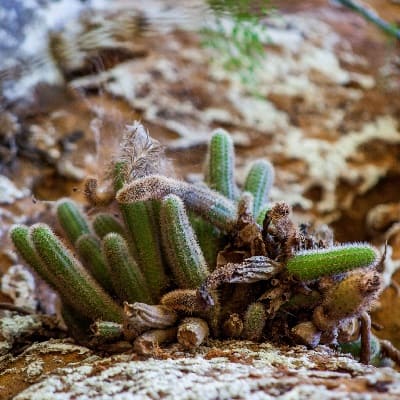
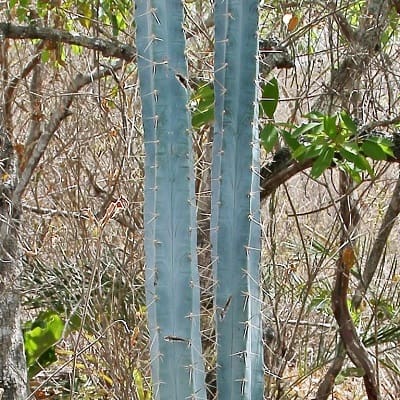

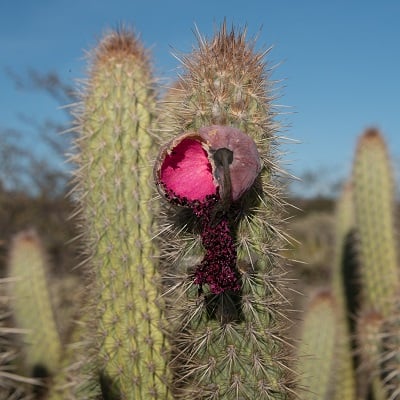
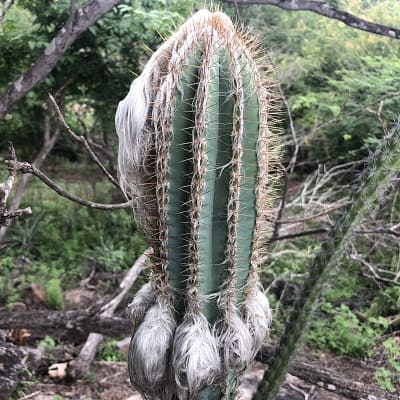

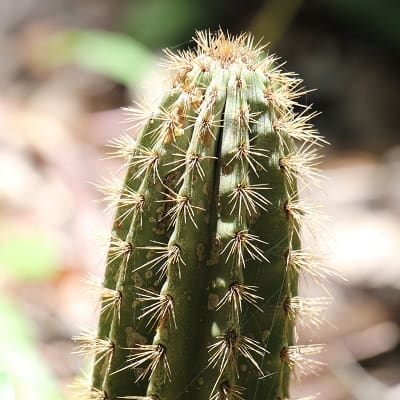
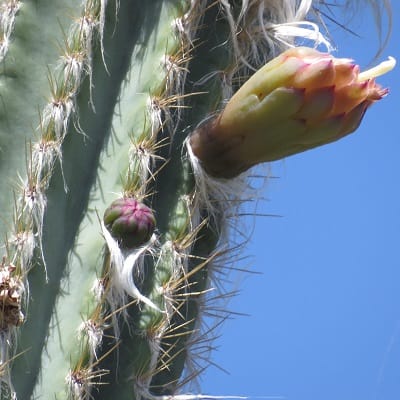
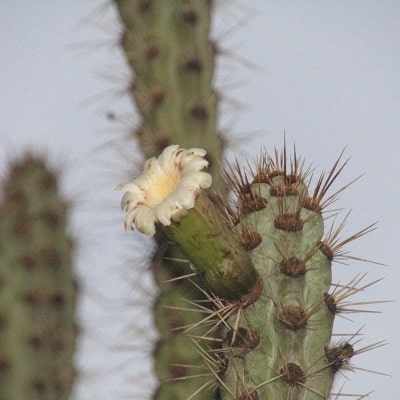


Pilosocereus chrysostele
The Pilosocereus chrysostele is a unique cactus found in Brazil, Mexico, and the Caribbean islands. It grows as a single tall stem, but some plants may grow extra branches under the right conditions. The stem is green with ridges running up and down.
Pilosocereus fulvilanatus
The Pilosocereus fulvilanatus is a hardy cactus native to Mexico and the Caribbean. It has an odd but tough look and thrives in hot climates. The stems and branches are thick with a pale green color.
Pilosocereus glaucescens
The Pilosocereus glaucescens (also Pilocereus glaucescens) is a controversial cactus. Back in 1853, a botanist named Labour described a cactus species, but the name was invalid. Later in 1933, another botanist named Werdermann used “glaucescens” for plants now known as Pilosocereus pachycladus.
The true identity of this species is uncertain. Most experts agree the Pilosocereus glaucescens may not even deserve its own species name. Plants sold under this name are usually the Pilosocereus pachycladus.
Pilosocereus lanuginosus
The Pilosocereus lanuginosus is a cool-looking columnar cactus made up of tall, slender tube-shaped branches up to 23 feet tall. When young, this cactus looks super attractive. It has 8-12 rigid spines including radial and central spines. The flowers are 2-3 inches long.
Pilosocereus leucocephalus
The Pilosocereus leucocephalus is a tree-like cactus with branches covered in thick, silky wool. Near the top grow short, funnel-shaped, flesh-colored flowers. This variable species has a large distribution area, which explains its many names.
Pilosocereus machrisii
The Pilosocereus machrisii is a columnar cactus 3-5 feet tall that branches from the bottom. Its branches are a cool blue-green color and shine with a glaucous blue tint when young. It has pretty yellow, needle-like spines.
Pilosocereus pachycladus
The spectacular Pilosocereus pachycladus (sometimes called Pilosocereus azureus) is one of the most tree-like columnar cacti. It can grow 3-33 feet tall with many erected, glaucous (bluish-silver) branches sprouting from the base or trunk. Its elegant shape makes it look like a mini blue Saguaro cactus – one of the bluest columnar cacti around!
Pilosocereus pachycladus ssp. pernambucoensis
This subspecies has 13-19 thinner lower ribs. The radial and central spines are about the same length, making them hard to tell apart. The areoles that grow flowers are not very hairy.
Pilosocereus pentaedrophorus
The Pilosocereus pentaedrophorus is a striking bluish-green cactus that grows tall, upright branches covered in ridges and thorny areoles. The areoles sprout nasty spines, so handling this plant is quite prickly! It can grow offsets or side branches near the top or middle.
Related Post:
1,000 Types of Cacti with Pictures
How to Care for Pilosocereus Cacti
These unique cacti need some special care to thrive at home. Here’s what you need to know:
Light
Pilosocereus cacti love lots of sunshine! Give them direct sunlight for up to 12 hours per day to help them grow big and strong. If growing outdoors, they’ll get plenty of rays. For indoor plants, set the pot on a sunny windowsill.
These cacti grow best in very warm climates like US Hardiness Zones 9b to 11b. They can’t handle extreme cold, so bring outdoor plants inside when temperatures drop in winter.
Water
Don’t be stingy with the water! Pilosocereus need a good soaking once a week during the spring and summer growing seasons. But let the soil dry out completely between waterings.
Too much water can cause root rot, which is bad news. In winter when the cactus is dormant or resting, you only need to water once or twice.
Soil
Use a well-draining potting mix or cactus soil for Pilosocereus. The soil should allow any excess moisture to drain away easily. Adding sand or perlite can help.
Fertilizing
These low-maintenance cacti don’t need much extra food. An occasional feeding with a balanced fertilizer during the growing season is enough. Dilute it a bit first – too much can harm the plant. Or use compost for an organic option.
Pests and Problems
Keep an eye out for mealybugs, scale insects, and mites which can infest Pilosocereus. Too much water leads to root rot. Bruising, yellow spots, and other signs of distress are common.
Use insecticidal soap, rubbing alcohol, or a strong spray of water to fight pests. But severe infestations may need stronger pest control methods.
How to Propagate Pilosocereus
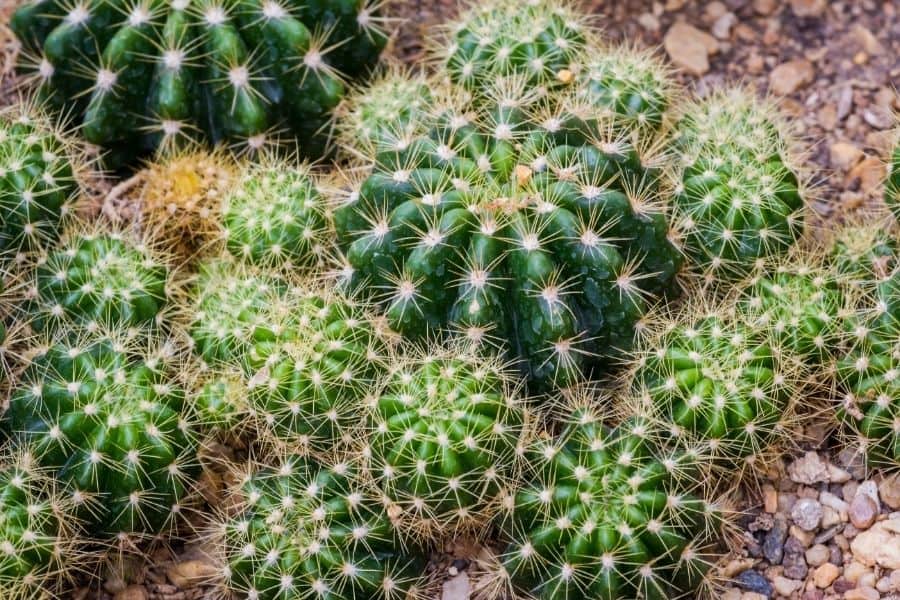
You can propagate many Pilosocereus species at home mainly by using stem cuttings from a mature plant. Here’s how:
- Cut off some branches from the top of a tall adult cactus.
- Divide the cuttings into smaller 4-6 inch pieces.
- Fill a pot with well-draining cactus/succulent soil.
- Plant the cuttings, pressing them into the soil until stable.
- Water the soil lightly to get the rooting process started.
Once the cuttings root and start growing, care for the new plants just like mature Pilosocereus. They’ll bloom flowers regularly during the warm season.
Pilosocereus Growth Rate
These cacti grow pretty quickly! The growth rate can vary between different Pilosocereus species, but most gain 2-3 feet per year when grown in optimal conditions, potentially reaching 30 feet tall. Of course, pot size restricts their max height to around 10 feet.
With proper care, they’ll also bloom plenty of flowers annually during the growing season. What eye-catching plants!
